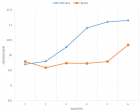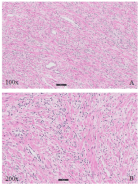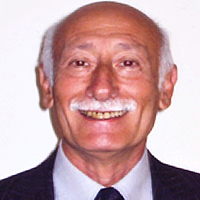Abstract
Research Article
Comparison of two types of strengthening exercises in upper limbs for improvement of wheelchair propulsion in paraplegics
Akanksha Satyavanshi, Monalisa Pattnaik and Patitapaban Mohanty*
Published: 10 February, 2017 | Volume 1 - Issue 1 | Pages: 027-033
Introduction: A reduction in physical activity due to spinal cord injury leads to deconditioning and increased dependency. Manual wheelchair propulsion is a straining form of ambulation and propulsion is based on the use of upper extremities, which are usually capable of producing less force with less efficiency. Theraband can be an exercise mode, which resembles wheelchair activity. Mat exercises are also given for strengthening of upper limb muscles in persons with paraplegia. The aim of this study is to compare effects of both elastic resistance strength training and strengthening by mat activity of upper limb muscles on wheelchair propulsion efficiency in persons with paraplegia.
Materials and Method: The selected subjects were randomly assigned into Theraband and Mat exercise groups with 15 subjects each. Theraband group received theraband strengthening of wheelchair propulsion muscles, whereas mat activity group received mat strengthening of wheelchair propulsion muscles. Total duration of treatment was 5 days per week for 5 weeks.
Results: Results of the study showed both mat exercise and theraband groups showed significant improvement in wheelchair 15 meter sprint test and wheelchair propulsion for 50 meters in paraplegics due to spinal cord injury. However, theraband group showed significantly more improvement.
Conclusion: The study revealed that theraband exercises for improving upper limb strength for wheelchair propulsion is superior to strengthening through mat exercise.
Read Full Article HTML DOI: 10.29328/journal.jnpr.1001004 Cite this Article Read Full Article PDF
Keywords:
Mat Activities; Paraplegia; Theraband; Wheelchair propulsion
References
- Capoor J, Stein AB. Aging with spinal cord injury. Phys Med Rehabil Clin N Am. 2005; 16: 129-61.
- Noreau L, Shephard RJ. Spinal cord injury, exercise and quality of life. Sports Med. 1995; 20: 226-250. Ref.: https://goo.gl/ADYcMX
- Tate DG, Kalpakjian CZ, Forchheimer MB. Quality of life issues in individuals with spinal cord injury. Am J Phys Med Rehabil. 2002; 83: S18-S25. Ref.: https://goo.gl/7L4lIk
- Soden RJ, Walsh J, Middleton JW, Craven ML, Rutkowski SB, et al. Causes of death after spinal cord injury. Spinal Cord. 2000; 38: 604-610. Ref.: https://goo.gl/y0HULB
- Michelle LO, Smith IJ, Lee KR, TRory AC, Suzanne LG, et al. Wheelchair Skill Performance of Manual Wheelchair Users With Spinal Cord Injury. Spinal Cord Inj Rehabil. 2012; 18: 138-139. Ref.: https://goo.gl/cGMljl
- Lucas HV, Woude VD, Groot SD. Wheelchair propulsion: A straining form of ambulation. The Indian Journal of Medical Research. 2005; 121: 719-722. Ref.: https://goo.gl/SZbyft
- Colado JC, Masso XG, Pellicer M, Alakhdar Y, Benavent J, et al. A Comparison of Elastic Tubing and Isotonic Resistance Exercises. Int J Sports Med. 2010; 31: 810-817. Ref.: https://goo.gl/GDzDLy
- Van der Scheer JW, Groot SD, Vegter RJ, Veeger DH, van der Woude LH. Can a 15m-overground wheelchair sprint be used to assess wheelchair-specific anaerobic work capacity? Med Eng Phys. 2014; 36: 432-438. Ref.: https://goo.gl/IbbxaG
- Mulroy SJ, Farrokhi S, Newsam CJ, Perry J. Effects of Spinal Cord Injury Level on the Activity of Shoulder Muscles during Wheelchair Propulsion: An Electromyographic Study. Arch Phys Med Rehabil. 2004; 85: 925-934. Ref.: https://goo.gl/VxT9qC
- Olenik LM, Laskin JJ, Burnham R, Wheeler GD, Steadward RD. Efficacy of rowing, backward wheeling and isolated scapular retractor exercise as remedial strength activities for wheelchair users: application of electromyography. Paraplegia. 1995; 33: 148-152. Ref.: https://goo.gl/rwVskg
- Ozmen T, Yuktasir B, Necmiye UY, Birol Y, Mark ETW. Explosive Strength Training Improves Speed and Agility in Wheelchair Basketball Athletes. Rev Bras Med Esporte. 2014; 20: Ref.: https://goo.gl/ltLfaJ
- Fleck SJ, Kraemer WJ. Designing Resistance Training Programs. Champaign, Ill: Human Kinetics. 1997.
- Andersen LL, Christoffer AH, Mortensen OS, Poulsen OM, Bjørnlund IBT, et al. Muscle Activation and Perceived Loading during Rehabilitation Exercises: Comparison of Dumbbells and Elastic Resistance. Phys Ther. 2010; 90: 538-549. Ref.: https://goo.gl/TIUMp5
- Stoppani J. Encyclopedia of Muscle & Strength. Human Kinetics. 2005; Champaign, IL.
- Keyser RE, Rasch EK, Finley M, Rodgers MM. Improved upper-body endurance following a 12-week home exercise program for manual wheelchair users. Journal of Rehabilitation Research and Development. 2003; 40: 501-510. Ref.: https://goo.gl/yykMuE
- Hickson RC, Rosenkoetter MA, Brown MM. Strength training effects on aerobic power and short-term endurance. Med Sci Sports Exerc. 1980; 12: 336-339. Ref.: https://goo.gl/TZ9jEf
- Coetsee C, Terblanche E. The time course of changes induced by resistance training and detraining on muscular and physical function in older adults. Eur Rev Aging Phys Act. 2015; 12: 7. Ref.: https://goo.gl/dmbbPT
- American Physical Therapy Association: Guide to Physical Therapist Practice, ed 2. Phys Ther. 2001; 81: 9-744.
Figures:

Figure 1

Figure 2
Similar Articles
-
Comparison of two types of strengthening exercises in upper limbs for improvement of wheelchair propulsion in paraplegicsAkanksha Satyavanshi,Monalisa Pattnaik,Patitapaban Mohanty*. Comparison of two types of strengthening exercises in upper limbs for improvement of wheelchair propulsion in paraplegics. . 2017 doi: 10.29328/journal.jnpr.1001004; 1: 027-033
Recently Viewed
-
Prediction of neonatal and maternal index based on development and population indicators: a global ecological studySedigheh Abdollahpour,Hamid Heidarian Miri,Talat Khadivzadeh*. Prediction of neonatal and maternal index based on development and population indicators: a global ecological study. Clin J Obstet Gynecol. 2021: doi: 10.29328/journal.cjog.1001096; 4: 101-105
-
A Genetic study in assisted reproduction and the risk of congenital anomaliesKaparelioti Chrysoula,Koniari Eleni*,Efthymiou Vasiliki,Loutradis Dimitrios,Chrousos George,Fryssira Eleni. A Genetic study in assisted reproduction and the risk of congenital anomalies. Clin J Obstet Gynecol. 2021: doi: 10.29328/journal.cjog.1001095; 4: 096-100
-
Leiomyosarcoma in pregnancy: Incidental finding during routine caesarean sectionToon Wen Tang*,Phoon Wai Leng Jessie. Leiomyosarcoma in pregnancy: Incidental finding during routine caesarean section. Clin J Obstet Gynecol. 2021: doi: 10.29328/journal.cjog.1001094; 4: 092-095
-
Adult Neurogenesis: A Review of Current Perspectives and Implications for Neuroscience ResearchAlex, Gideon S*,Olanrewaju Oluwaseun Oke,Joy Wilberforce Ekokojde,Tolulope Judah Gbayisomore,Martina C. Anene-Ogbe,Farounbi Glory,Joshua Ayodele Yusuf. Adult Neurogenesis: A Review of Current Perspectives and Implications for Neuroscience Research. J Neurosci Neurol Disord. 2024: doi: 10.29328/journal.jnnd.1001102; 8: 106-114
-
Late discover of a traumatic cardiac injury: Case reportBenlafqih C,Bouhdadi H*,Bakkali A,Rhissassi J,Sayah R,Laaroussi M. Late discover of a traumatic cardiac injury: Case report. J Cardiol Cardiovasc Med. 2019: doi: 10.29328/journal.jccm.1001048; 4: 100-102
Most Viewed
-
Evaluation of Biostimulants Based on Recovered Protein Hydrolysates from Animal By-products as Plant Growth EnhancersH Pérez-Aguilar*, M Lacruz-Asaro, F Arán-Ais. Evaluation of Biostimulants Based on Recovered Protein Hydrolysates from Animal By-products as Plant Growth Enhancers. J Plant Sci Phytopathol. 2023 doi: 10.29328/journal.jpsp.1001104; 7: 042-047
-
Sinonasal Myxoma Extending into the Orbit in a 4-Year Old: A Case PresentationJulian A Purrinos*, Ramzi Younis. Sinonasal Myxoma Extending into the Orbit in a 4-Year Old: A Case Presentation. Arch Case Rep. 2024 doi: 10.29328/journal.acr.1001099; 8: 075-077
-
Feasibility study of magnetic sensing for detecting single-neuron action potentialsDenis Tonini,Kai Wu,Renata Saha,Jian-Ping Wang*. Feasibility study of magnetic sensing for detecting single-neuron action potentials. Ann Biomed Sci Eng. 2022 doi: 10.29328/journal.abse.1001018; 6: 019-029
-
Pediatric Dysgerminoma: Unveiling a Rare Ovarian TumorFaten Limaiem*, Khalil Saffar, Ahmed Halouani. Pediatric Dysgerminoma: Unveiling a Rare Ovarian Tumor. Arch Case Rep. 2024 doi: 10.29328/journal.acr.1001087; 8: 010-013
-
Physical activity can change the physiological and psychological circumstances during COVID-19 pandemic: A narrative reviewKhashayar Maroufi*. Physical activity can change the physiological and psychological circumstances during COVID-19 pandemic: A narrative review. J Sports Med Ther. 2021 doi: 10.29328/journal.jsmt.1001051; 6: 001-007

HSPI: We're glad you're here. Please click "create a new Query" if you are a new visitor to our website and need further information from us.
If you are already a member of our network and need to keep track of any developments regarding a question you have already submitted, click "take me to my Query."














































































































































